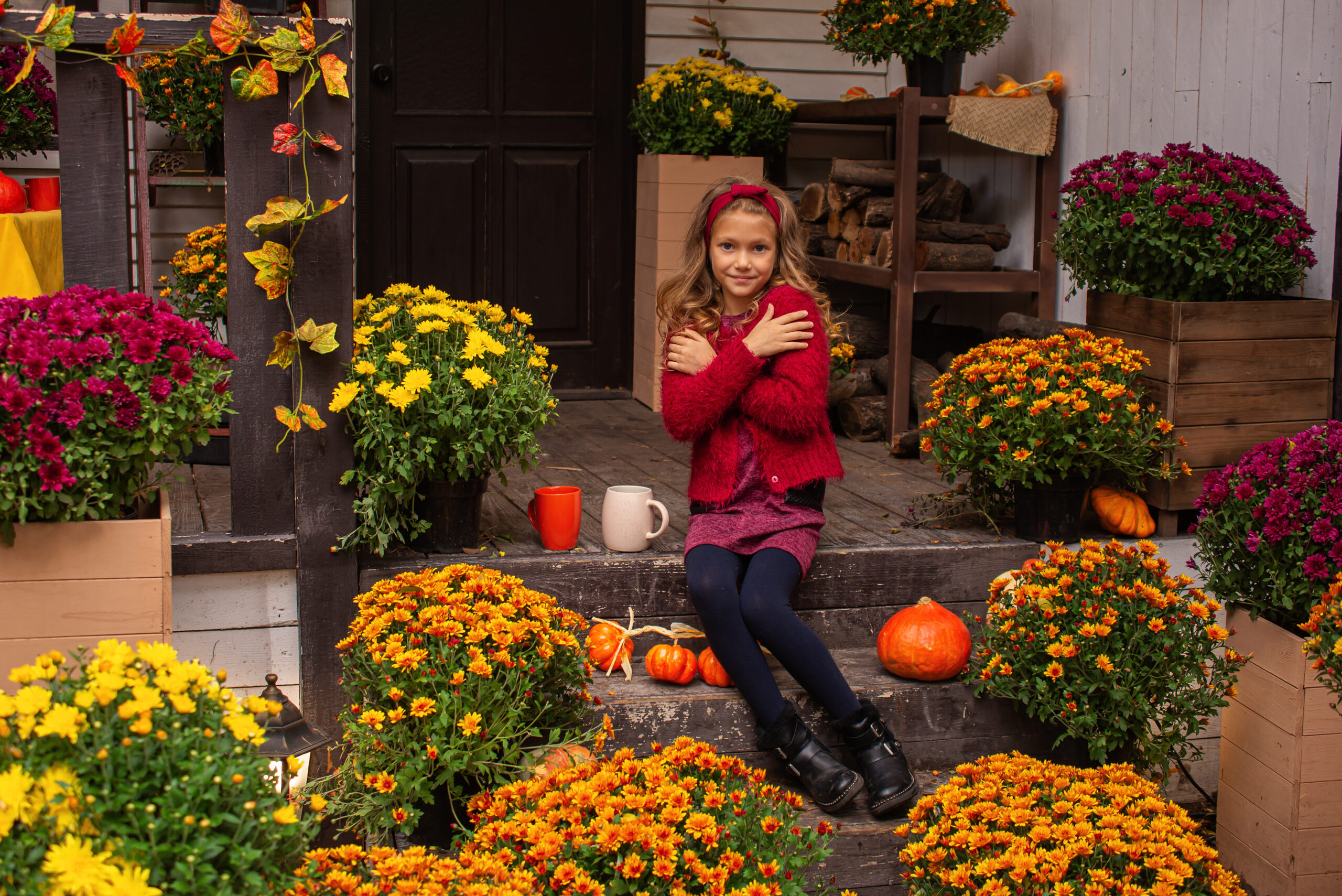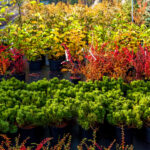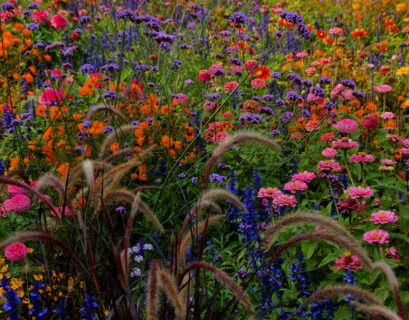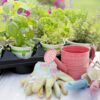Starting with perennial garden planning is more than just throwing seeds around. It’s about creating a garden that gets better every year. Imagine your garden changing with new colors and textures every season. No need to start over every spring.
But how do you make a perennial garden that grows stronger over time? It’s all about knowing what your garden needs and choosing the right plants. You’ll learn about soil, planning for the seasons, and how to keep your garden looking great.
For the best garden, you’ll need about 3 cubic yards of organic matter for every 1,000 square feet. Add spots in your garden for new plants to grow. This makes your garden interesting and keeps it fresh.
Think about how much water your plants need and match them up right. Even in winter, perennials need water. By dividing plants and fertilizing seasonally, you keep your garden healthy.
To keep your garden looking great, remove dead flowers and trim plants. This encourages more blooms. Before winter, trim or divide plants to help them survive the cold. This way, they’ll be ready to grow again in spring.
Understanding the Perennial Garden Architecture
The art of perennial garden layout blends beauty with practicality. It makes a space that looks great and grows well every year. It’s key to think about plant shapes and how they grow. This helps match the garden’s look.
Plants like Astrantia major ‘Claret’ and Actaea ‘James Compton’ are chosen for their looks and growth. They help shape the garden’s structure.
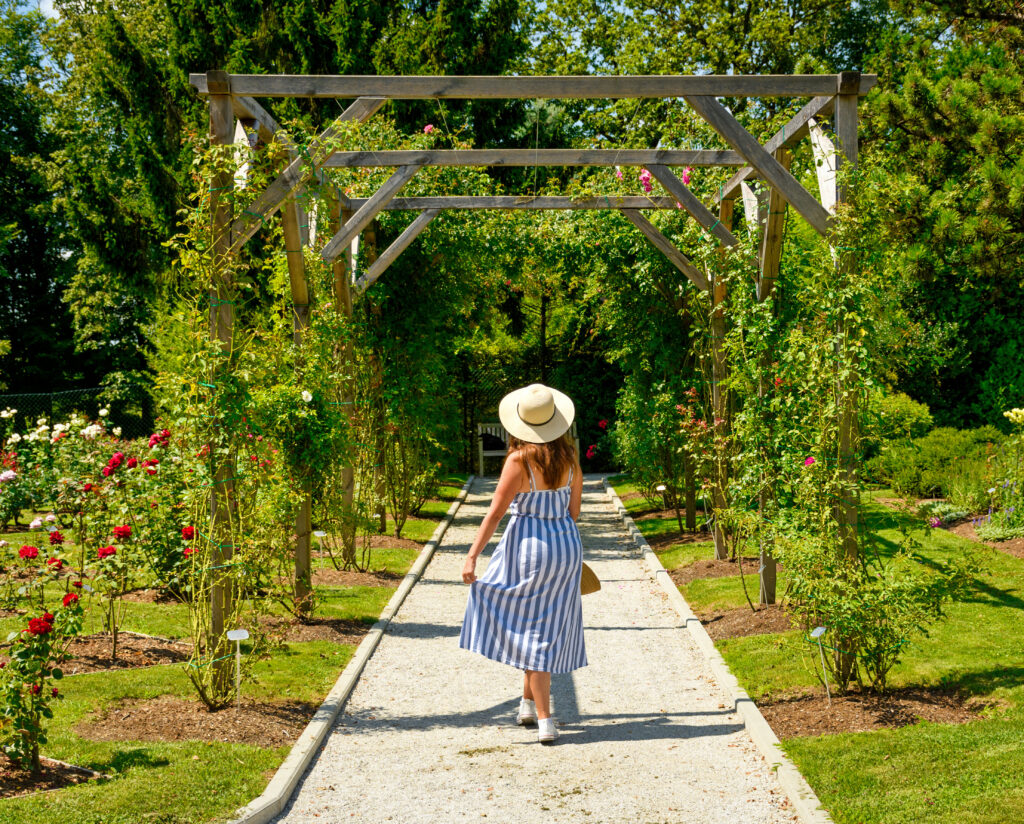
Using garden design tips helps plan your garden. Things like odd-numbered groups and curved lines make it look natural. This approach is part of seasonal gardening. Knowing how plants grow helps make your garden better.
Don’t forget the practical side of a perennial garden layout. Plants need space for air and sunlight. This lets plants like Sedum ‘Matrona’ and Verbena bonariensis do well. Proper spacing also means your garden stays colorful all season.
Choosing the right plants for your climate and sunlight is key. This way, your garden will not only look good but also be healthy.
A well-thought-out perennial garden considers looks and the environment. Picking the right plants and understanding their needs makes for a beautiful, sustainable garden.
Designing a Perennial Garden That Thrives in Your Climate
Creating a perennial garden that looks great and thrives in your climate takes careful plant selection and a good perennial garden layout. You need to pick plants that fit your local environment well. For example, plants like English lavender and Russian sage are great for zones 3 to 10. They handle full sun and heat well.
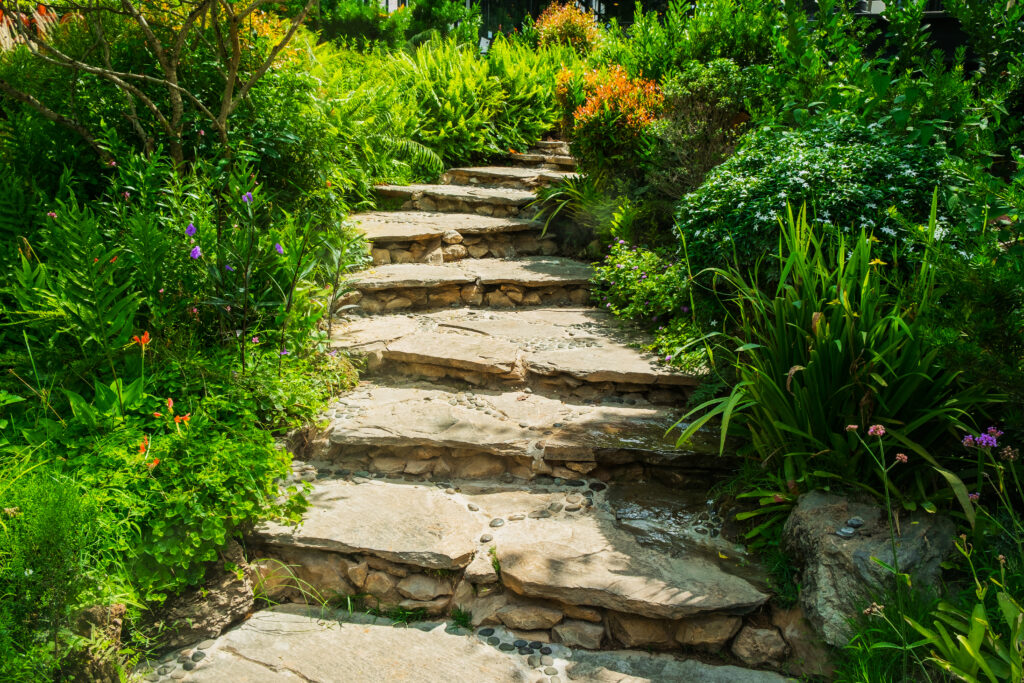
When planning perennial garden ideas, it’s key to choose plants that need the right conditions to grow well. Peonies, for instance, need a cold winter in zones 2-8 to bloom beautifully. Adding spring bulbs like tulips and daffodils means your garden looks great from early spring to fall.
Getting the soil right is important for perennials. Adding organic matter helps plants that like moist, well-drained soil. This makes your garden strong and able to handle different weather. Choosing plants that are easy to care for also helps your garden be sustainable. It means you won’t have to water or care for it as much.
A good perennial garden layout mixes plants of different heights, colors, and bloom times. This makes your garden look good all season. Adjusting the garden size and using similar plants lets you make it fit your space and style. It keeps your garden looking great and working well.
In the end, knowing how to tailor your garden makes it beautiful, sustainable, and fun all year. Using these perennial garden ideas means you get a garden that fits your environment and meets your gardening goals.
Creating a Cohesive Garden Layout
Starting with garden design for beginners means focusing on a cohesive layout. Begin with a plan, not just throwing plants together. Experts suggest planting in blocks or large groups for a unified look. This makes the garden more vibrant and visually appealing.
Good garden layouts focus on spacing and pairing plants well. Using the sibling plant strategy keeps things dynamic yet harmonious. For example, pair Eryngium giganteum with Hosta ‘El Nino’ in suitable spots, giving each enough room to grow.
Think about how plants grow and change with the seasons. John Brennan and Peter Reader suggest choosing plants that flower at different times and have different textures. Mixing plants like the golden Japanese cedar with ‘Aureola’ Japanese forest grass adds height and color all year.
Another tip for beginners is to use plant repetition and group them in odd numbers. Patricia Tyrrell advises buying three, five, or seven of the same plant for harmony. This approach creates a pleasant rhythm and avoids a disjointed look.
Editing your garden by removing underperforming plants is key. This makes room for better plants, improving the garden’s look and its health.

Designing a Perennial Garden for Year-Round Interest
Creating a perennial garden means picking plants that look good all year. You need to choose species that do well in different weather. This way, your garden stays lively throughout the seasons. Using a mix of plants that bloom at different times adds color and texture.
Start with early bloomers like Forsythia in spring. Then, add Echinacea and Black-Eyed Susans for summer color. In autumn, New England Aster and Tall Sedums add to the beauty. Even winter can be beautiful with evergreens and early bloomers like snowdrops and hellebores.
Adding plants like Butterflyweed and Daylilies helps pollinators and keeps your garden healthy. Perennials like Hubricht’s Bluestar and False Indigo change with the seasons. They go from lush green in spring to golden in fall.
Knowing how tall and when plants grow helps create a layered look. Use ground huggers like Golden Barrenwort around the edges and taller plants like Tall Phlox and Baby Joe-Pye Weed in the back. This way, every plant gets its time to be the star.
Combining plants and placing them wisely adds interest all year. Watching and learning and adjusting your garden each year makes it better. With perennial garden planning, you can enjoy a beautiful garden in every season.
Maximizing Plant Health and Garden Sustainability
When designing a perennial garden, we focus on looks and on keeping plants and gardens healthy and sustainable. Starting with good soil is key. Adding compost cuts down on synthetic fertilizers and helps plants grow strong and fight off diseases. This method also means plants get the nutrients they need without too much chemical help.
Mulching is a big part of keeping gardens sustainable. It uses things like straw and leaves to stop weeds and keep the soil moist. This means you don’t have to water as much. A thick layer of mulch also helps keep the soil’s moisture just right.
Thinking about the whole ecosystem is key to garden sustainability. Using many different types of perennials means you don’t have to replant as much. This saves resources and helps wildlife. Healthy soil, full of organic matter, naturally keeps pests and diseases away, making plants strong.
Using water wisely, like with rain barrels, is good for the planet. It’s really important in places where water is scarce. Learning about eco-friendly gardening helps gardeners use methods that are good for the planet and their gardens.
In the end, making a perennial garden that’s good for the planet is rewarding. By composting, mulching, and choosing the right plants, gardeners can create a space that’s easy to care for. This approach helps the environment and makes gardening a better experience.
Bringing Your Perennial Garden to Life with Color Blocks
Creating a vibrant perennial garden is all about color blocks. Grouping plants in odd numbers, like three or seven, makes the garden pop. These groups create bold colors that draw the eye through the garden.
Designing a colorful perennial garden is different from a vegetable garden. It needs a clear design and a love for storytelling through colors. By choosing the right plants and editing your garden, you can make it a colorful wonderland.
Editing your garden means picking the best plants for your space. It’s about removing plants that don’t do well. This keeps your garden looking great and saves money.
To make your garden better, divide plants instead of adding new ones. This keeps your garden full of life without spending more money.
Planting plants in the right spots helps them grow well. Mixing early and late bloomers keeps your garden colorful all season. Keeping track of what works and what doesn’t helps you make your garden even better.
Testing your soil and using fish compost can make your plants thrive. Grouping plants with similar needs makes caring for your garden easier. With the right mix of colors, textures, and heights, your garden will be a masterpiece.

